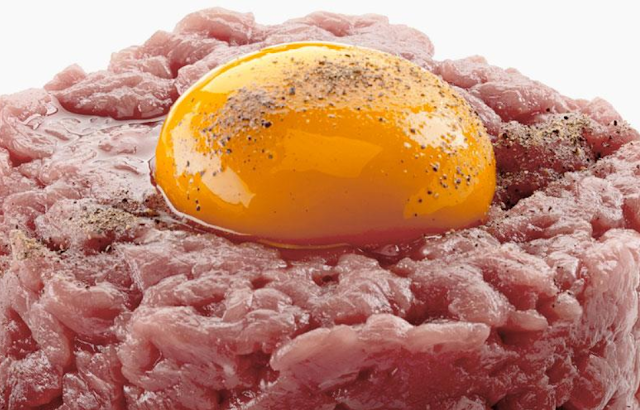Undercooked pork: is Under-cooked Pork Really Bad for You?
According to the Centers for Disease Control and Prevention, only five Americans were diagnosed with the disease in 2004, and most of them probably got it from eating wild game. (Between 1997 and 2001 only 8 resulted from eating domestic commercial pork).
In the past, pigs were infected with trichina (Trichinella spiralis is a nematode parasite, occurring in rodents, pigs, horses, bears, and humans, and is responsible for the disease trichinosis. It is sometimes referred to as the "pork worm" due to it being found commonly in undercooked pork products) from eating raw meat scraps.
In the past, pigs were infected with trichina (Trichinella spiralis is a nematode parasite, occurring in rodents, pigs, horses, bears, and humans, and is responsible for the disease trichinosis. It is sometimes referred to as the "pork worm" due to it being found commonly in undercooked pork products) from eating raw meat scraps.
Today, most eat grain-based pellet food, similar to dog chow. Organically raised pigs munch grass. It’s illegal to feed raw meat to pigs raised commercially. Hence, trichinosis has been virtually eliminated.
Pork can contain the same disease-causing bacteria as any other meats—salmonella, E. coli, and other nasties. As for how much to cook your pork, go by temperature, not color. The USDA recommends that pork be cooked to an internal temperature of at least 160 degrees, though chefs like Jonathan Zearfoss, culinary arts professor at the Culinary Institute of America, advocate for less. “From a purely aesthetic standpoint, I think 145 is well past the desirable temperature,” he says. This will usually be enough to kill off E. coli and salmonella. But be warned: Since today’s pork is very lean, cooking it at a higher heat can dry it out.
Pork can contain the same disease-causing bacteria as any other meats—salmonella, E. coli, and other nasties. As for how much to cook your pork, go by temperature, not color. The USDA recommends that pork be cooked to an internal temperature of at least 160 degrees, though chefs like Jonathan Zearfoss, culinary arts professor at the Culinary Institute of America, advocate for less. “From a purely aesthetic standpoint, I think 145 is well past the desirable temperature,” he says. This will usually be enough to kill off E. coli and salmonella. But be warned: Since today’s pork is very lean, cooking it at a higher heat can dry it out.
 |
| undercooked pork |